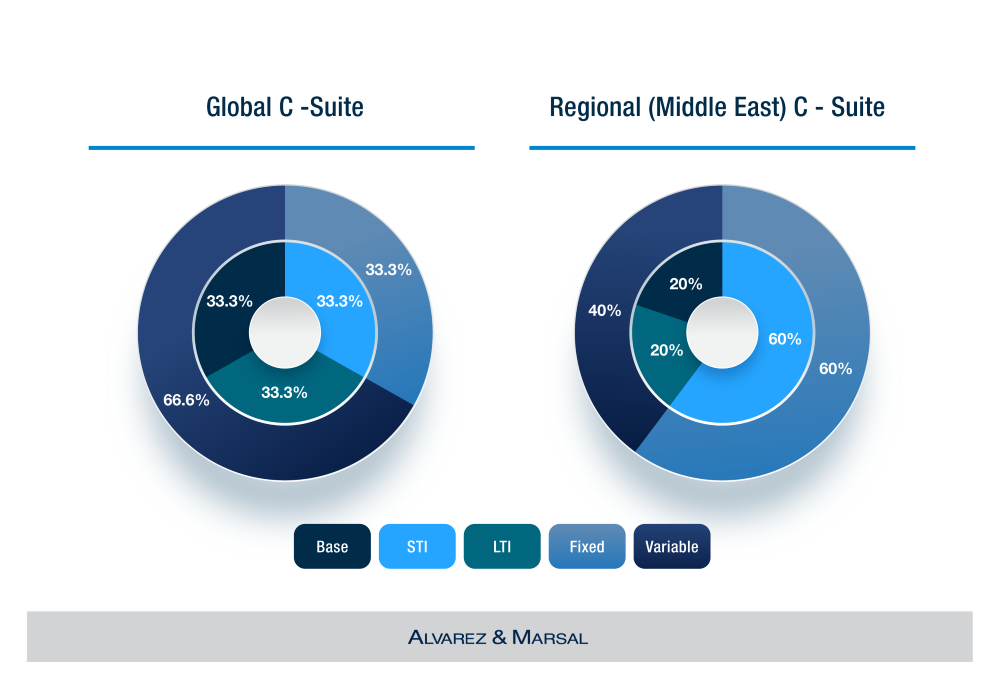
Publish Date
Nov 29, 2023
Human Capital Today
Long-term incentive programs (LTIPs) are more than just compensation schemes; they are strategic tools that can make or break a company’s ability to attract and retain top talent. While the Middle East and the other global markets share a common interest in harnessing the power of LTIPs, the nuances of culture, legal frameworks, tax and other economic conditions create distinctive paths. However, there are common strategies that companies in all regions can employ to navigate these differences to design and implement effective LTIP structures.
Historically (i.e., 10-15 years ago), as companies in the Middle East began to diversify from oil and gas to build their strategic vision for the future, a key component of the compensation packages used to recruit talent abroad was high base salaries and generous allowances. Individual rewards were rarely directly tied to performance of the business, which in turn resulted in retention issues and/or incentivizing behaviors that were not necessarily aligned with the long-term growth and health of the company.
In more recent years, one of the defining characteristics of employee populations in the Middle East is the influence of collectivism and loyalty to the organization. In this region, success often hinges on fostering a sense of unity among employees. Therefore, incentive structures frequently prioritize group-based rewards and profit-sharing arrangements. Where formal incentive arrangements exist, these programs emphasize commitment to the company, with guaranteed bonuses serving as incentives for employees to stay for extended durations. However, LTIPs are generally not as prevalent in the Middle East, as many companies are hesitant to grant real equity and the non-equity LTIP alternative approaches (i.e., synthetic equity, long-term cash, etc.) are less understood.
Conversely, in the United States and much of Europe, individualism reigns supreme. Equity-based compensation, such as restricted stock/units, stock options and performance-based long-term incentives (LTI) are favored and can comprise significant components of an employee’s overall compensation package. Short- and long-term incentive structures often emphasize individual performance and provide employees with the opportunity to reap financial rewards commensurate with their efforts. The emphasis here is on attracting and retaining top talent through the promise of personal financial gain, with significant financial upside opportunities for superior performance.
While specific incentive plan designs vary from company to company, the differences in the use of incentive compensation can be seen by comparing global (i.e., the U.S., Europe and Asia) and regional (specifically, the Middle East) differences in pay mix:

Further, the regional example above potentially overstates the role of incentive compensation by presuming the presence of an LTIP within the overall compensation package. More often in the region, where LTIPs are the exception rather than the norm, many companies utilize a pay mix that is even further weighted to fixed pay (i.e., an 80 percent/20 percent fixed/variable pay mix) with no LTIP component at all.
Globally, LTIPs are more prevalent among public companies than private companies. That said, the use of LTI compensation by private companies is increasing significantly as these companies often compete for talent with publicly-traded companies where such programs are in place.
As such, we are seeing a general increase in the use of LTIPs across the board in the U.S., Europe and Asia. The key difference between public and private company LTIPs is generally the use of cash-based “phantom” or “synthetic” equity approaches (e.g., phantom stock units and stock appreciation rights) by private companies rather than issuing real equity (e.g., restricted stock/units and stock options) as is more common with publicly-traded companies.
Regionally, LTI compensation is far less prevalent. Only three of the eight Middle Eastern regional companies in a recent peer group review granted LTI compensation to their executive management team.
Additionally, while market compensation data for the region may include LTIP amounts, the frequency and amounts of LTI compensation (especially below the C-Suite and VP/Head of levels) is not significant.
Given the desire and need to attract key talent from companies where LTIPs are more common, we are starting to see companies based in the Middle East explore the potential design and implementation of a LTIP for key executives and senior management. Depending on the plan design, LTIPs can be a powerful tool for employers to incentivize key employees without depleting cash reserves (either in the short-term, or at all).
LTIPs can be put in place for all types of businesses, and the appropriate LTIP design for a particular company can depend on a number of factors, including size of the company, entity structure and the company’s short-, mid- and long-term objectives. Not all LTIPs are created equally. A well-designed LTIP will help both attract and retain talent. Below are some threshold decisions that must be addressed in every program:
Unlike in the past, expat assignments in the Middle East are now perceived as longer-term opportunities. Whereas in the past expats may only be reasonably expected to remain in the region for one to three years on average, longer stints of over five years are becoming more commonplace. These individuals are now looking to buy homes in the region, putting down more stable roots and becoming more invested and integrated into the region long-term. As such, the talent is keener to be attracted to long-term compensation that aligns their individual interests with the performance of their employers. In navigating the complexities of LTIPs in the Middle East and globally, it is essential for companies to embrace the unique factors at play. A nuanced approach that aligns LTIPs with organizational goals while respecting regional nuances is key.
Just as a crisis presents an opportunity for innovation, the distinct LTIP landscape in each region offers a chance to rethink and optimize these incentive programs. By carefully considering the dynamics, companies can position themselves for sustainable growth and success while retaining and motivating their valuable workforce.